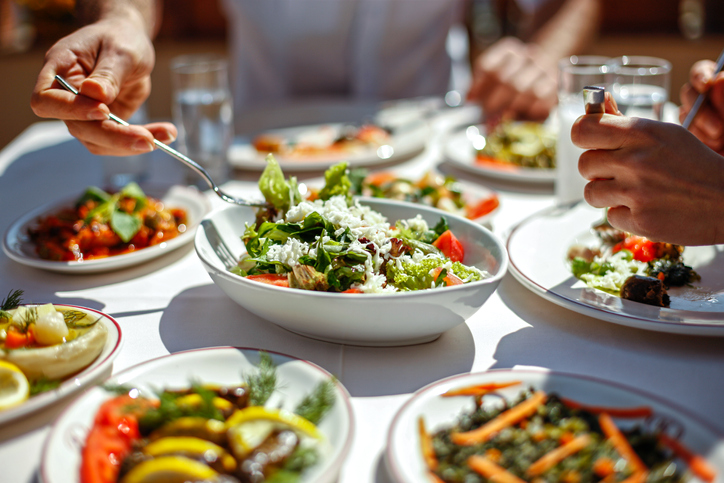
Welcome to the ultimate guide for weight loss, specifically designed for health-conscious men over 30 years old. As we age, our metabolism naturally slows down and it becomes more challenging to shed those extra pounds.
Weight loss isn’t just for the young. With the right approach, men over 30 can achieve lasting results while maintaining health and vitality.
Whether you want to shed some pounds or make a lifestyle change, this blog post offers valuable insights and practical tips. It will guide you towards achieving your desired body composition and overall well-being. Let’s dive in!
Understanding the basics of weight loss

Weight loss occurs when we burn more calories than we consume. This concept is known as “calorie deficit”. It’s simple math – to lose weight, you must eat less and move more.
However, it’s not just about calorie counting. The quality of the food we eat also plays a crucial role in our weight loss journey. Highly processed foods and sugary drinks can lead to weight gain and other health issues.
On the other hand, a diet rich in whole foods such as fruits, vegetables, lean protein, and healthy fats can support a healthy metabolism and aid in weight loss.
Explaining the concept of calories in vs. calories out
Calories in versus calories out is a fundamental principle in weight management and overall health. It refers to the balance between the calories consumed through food and the calories burned through physical activity and metabolic processes.
To lose weight, you need to burn more calories than you consume. Conversely, to gain weight, you should consume more calories than you burn. Understanding weight loss and gain is crucial. It highlights the importance of regular physical activity and a healthy, balanced diet.
By keeping track of our calorie intake and expenditure, we can better achieve our health and fitness goals.
Factors that affect weight loss such as age, gender, and metabolism
Achieving weight loss goals can be a complex journey, as there are a multitude of factors that influence one’s ability to lose weight. Age, gender, and metabolism are just a few examples of variables that can affect the weight loss process.
As individuals age, their metabolism tends to slow down, making it more difficult to lose weight. Additionally, males typically have a faster metabolism than females, which can impact weight loss outcomes.
An individual’s metabolic rate is mostly influenced by genetics, which means some people are naturally more inclined to lose weight than others. Considering these factors is crucial for a successful weight loss journey. Tailored approaches optimize the potential for success.
Check out these related articles:
#6 Best Foods To Boost Your Metabolism
How To Get Your Body To Burn Stored Fat
The importance of a healthy diet

For many individuals, losing weight can be a challenging task. It requires discipline, motivation, and a lot of hard work.
However, the ultimate guide for successful weight loss begins with a healthy diet. A healthy diet provides the necessary nutrients to fuel our bodies and maintain optimal health.
It also helps regulate our metabolism, which plays a significant role in weight loss. Eating nutrient-dense foods like fruits, vegetables, whole grains, and lean proteins can help with weight loss and overall well-being.
A balanced diet helps control cravings and prevents overeating, common obstacles to weight loss goals. By fueling our bodies with wholesome foods, we can avoid the empty calories found in processed and unhealthy options.
Moreover, a healthy diet has numerous benefits beyond just weight management. Regular exercise improves energy levels, enhances mood, and lowers the risk of chronic diseases like heart disease and diabetes.
Incorporating a healthy eating plan is essential for achieving weight loss and maintaining overall health and well-being.
Tips for creating a balanced and sustainable meal plan
Creating a balanced and sustainable meal plan can be a daunting task, but it is essential for maintaining the ultimate guide for weight loss. To start, it is necessary to assess your individual nutritional needs and goals.
This involves finding the ideal balance of macronutrients (carbs, proteins, fats) and micronutrients (vitamins, minerals) to support your body.
Additionally, it is crucial to consider portion sizes and regular meal times to keep your metabolism functioning optimally. Choose nutrient-dense foods with healthy fats, proteins, and complex carbohydrates.
With proper planning, creating a balanced and sustainable meal plan can be a simple and rewarding process.
Incorporating more whole foods and reducing processed foods
As a society, we have become reliant on processed foods due to their convenience and accessibility. Research shows that a diet rich in processed foods can cause health problems like obesity, diabetes, and heart disease.
Including more whole foods in our diets and cutting back on processed foods can significantly enhance our health and well-being.Whole foods like fruits, vegetables, whole grains, and lean proteins supply our bodies with vital vitamins, minerals, and nutrients for optimal health.
By making simple changes in our diet and choosing whole, unprocessed foods, we can take control of our health and live a more vibrant life.
The role of exercise in weight loss

The ultimate guide for weight loss involves the role of exercise. A healthy lifestyle and weight loss rely on a balanced diet and regular physical activity for optimal results and improved overall health.
Exercise not only burns calories, but it also helps build lean muscle mass and boosts metabolism, which can lead to sustained weight loss. FEngaging in physical activity is linked to lower risk of chronic diseases like diabetes, heart disease, and certain cancers.
Exercise alone may not suffice for significant weight loss; a balanced diet and consistent physical activity are crucial to create a caloric deficit.
Different types of exercises and their benefits for weight loss
Regular exercise is key to effectively shedding unwanted pounds, but not all workouts are created equal. By combining different types of exercises, you can maximize weight loss and improve overall health.
Cardio exercises like running or biking raise heart rate and burn calories, while strength training builds lean muscle mass, boosting metabolism for more fat loss.
Low impact workouts, like yoga and pilates, can also be effective for weight loss by improving flexibility and reducing stress levels.
Additionally, high intensity interval training (HIIT) has recently gained popularity for its ability to burn calories and fat quickly. By incorporating a variety of exercises into your routine, you can help achieve your weight loss goals and improve overall fitness.
Check out this related article: Hacks To Speed Up Weight Loss
Mindful eating and portion control

Mindful eating is the practice of paying attention to what and how much you eat, without distractions. By slowing down and being more present during meals, you can better recognize when your body is full and make healthier food choices.
How do I practice mindful eating?
Start by sitting down at a table and removing any distractions, such as your phone or television. Take the time to appreciate the appearance and aroma of your food before taking a bite. Chew slowly and focus on the flavors and textures in each mouthful. This helps you to be more aware of your body’s hunger and fullness cues.
In addition to mindful eating, portion control is also key in maintaining a healthy weight. It’s important to pay attention to serving sizes and not overeat. Here are some tips for controlling portion sizes:
- Use smaller plates: Choosing a smaller plate can help you visually see a fuller plate and feel satisfied with a smaller portion.
- Measure and weigh your food: This can help you accurately track serving sizes and prevent overeating.
- Eat slowly: Taking your time to eat allows your body to register fullness before you’ve eaten too much.
- Practice mindful snacking: Instead of eating straight from the bag or container, portion out snacks into a small bowl to prevent mindless overeating.
By practicing mindful eating and portion control, you can enhance physical fitness and maintain a healthier lifestyle. Remember to listen to your body’s cues and make conscious choices about what and how much you eat.
Check out this related article: #6 Best Intermittent Fasting For Weight Loss
Managing stress and emotional eating

Stress and emotions can greatly impact our eating habits. Many people turn to food for comfort or as a coping mechanism during stressful times.
What are the signs of emotional eating?
- Eating when not physically hungry
- Craving specific foods for emotional reasons (e.g. ice cream for comfort)
- Using food to cope with emotions or stress
- Feeling guilty or ashamed after eating
- Having difficulty controlling food intake
If you notice these signs in yourself or others, it’s important to address the root cause and find healthier ways to cope with emotions and stress. Some strategies include:
- Practicing deep breathing exercises
- Engaging in physical activity or exercise
- Talking to a trusted friend or therapist
- Finding a new hobby or activity to distract from emotional eating
By addressing and managing stress and emotions, we can improve our relationship with food and promote overall well-being. It may also be helpful to make a list of alternative activities or coping mechanisms that you can turn to instead of turning to food. Remember, it’s okay to seek support and guidance in this process.
Check out this related article: Burning Fat While you Sleep
Conclusion
In conclusion, rather than relying on crash diets, it’s important to see weight loss as a journey to better health and wellness. This involves making gradual and sustainable changes to your lifestyle and habits.
The ultimate guide for weight loss focuses on positive changes beyond the scale, you can achieve long-term success in maintaining a healthy weight and improving overall well-being. Celebrate and value the small victories on your weight loss journey. Make it a journey you can enjoy and benefit from for years to come.
So, let’s shift our perspective and embrace a holistic approach to weight loss – one that prioritizes not only physical health, but mental and emotional, well-being as well. With dedication, patience, and self-love, you can achieve a healthy weight and lead a fulfilling life.
So go forth and start your journey towards a healthier you!
Check out these related article:
How To Lose Stubborn Belly Fat Fast: A Guide To A Flatter Stomach
How To Burn Fat Without Exercise
Check out this related website: Jimmy Joy: Complete Guide To Fat Loss
